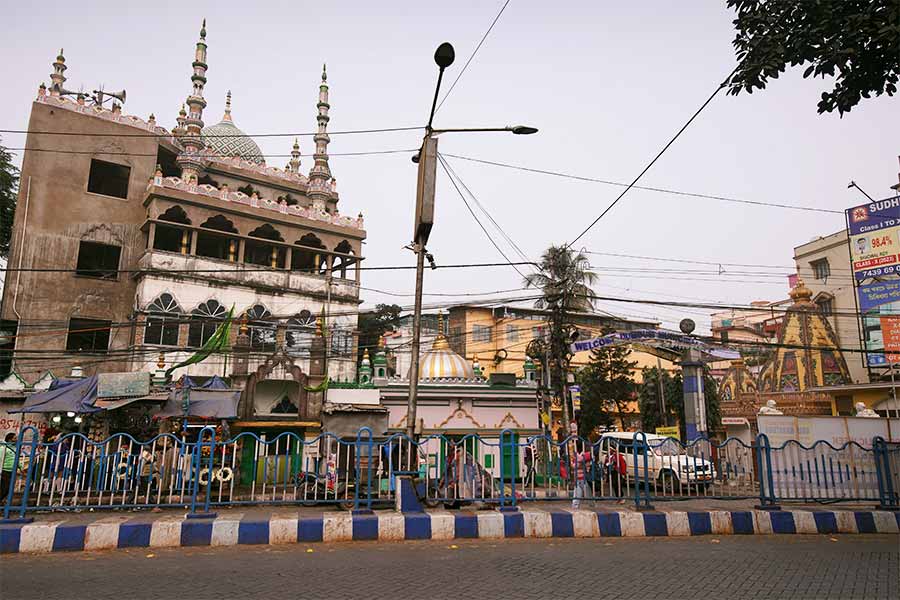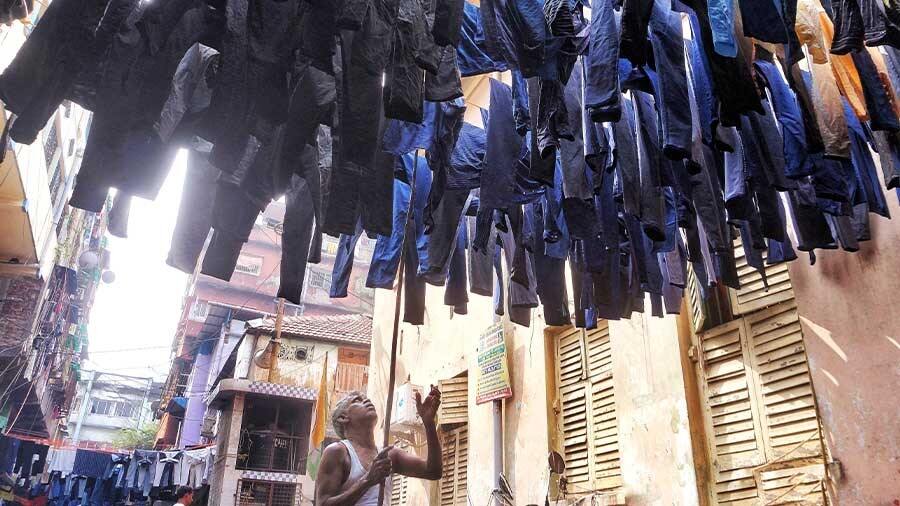When an Uber driver calls to confirm the exact location, ‘‘mandir-masjid galir kachhe (next to the mandir-masjid gali)” is the most precise description a local resident can provide.
The name mandir-masjid gali might ring a bell for many who have been around the place. Jessore Road, near gate one of the Netaji Subhas Chandra Bose International Airport, bifurcates into VIP Road on one side and an expansive lane on the other, called Tarun Sengupta Sarani. Anyone heading into this lane will pass by a Kali temple on their right and a mosque on their left. As Kazi Nazrul Islam writes in his song, “Mora eki brinte duti kusum Hindu Musalman”, the two structures belonging to two different faiths have been co-existing since before Independence at least, unbothered by man-made conflicts taking place from time to time.
“We’ve had a mutual understanding with the mosque for generations. Whenever they have a festival, we don’t turn our mics on. It’s the same for them, too,” says Tamal Ranjan Sengupta, 65, who is currently in charge of supervising the temple. The temple is run by the Hindusthan Volunteers Club, which was established in 1964. But no one seems to be aware of the year the temple was founded. “We’ve been aware of this temple since birth. Even the founding members of the club are unaware of the year the temple was built. It’s the same for the mosque. It’s been there for as long as we can remember,” explains Sengupta.
‘There’s nothing like Hindu-Muslim differences here. We’re all humans’
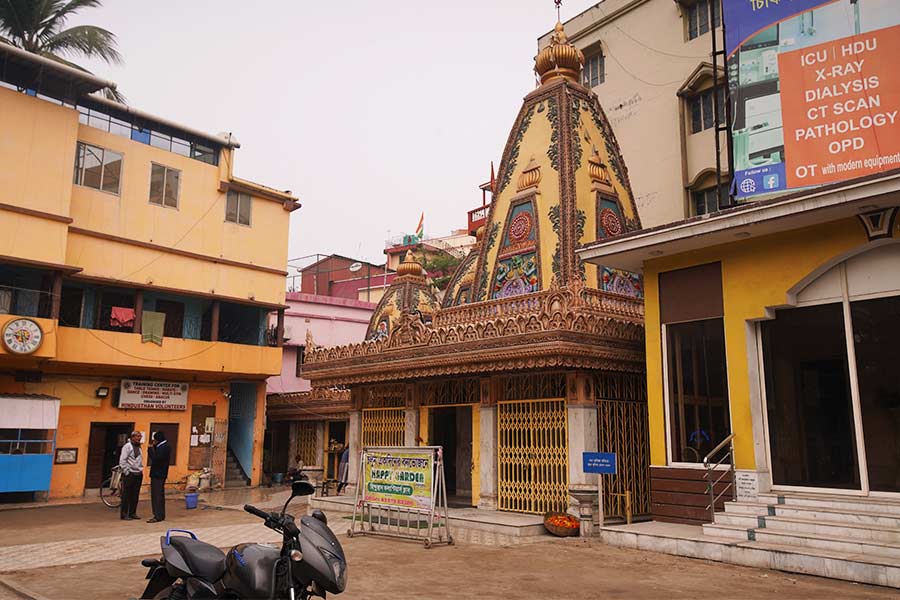
Administrators of the mosque frequently donate to the temple
The temple, as it stands today, was not always built out of cement. It used to be a small tent made of tin, containing a much smaller idol (as compared to the current one) of the goddess made of mud, which had ruptured over time. The year the Hindusthan Volunteers Club came into existence, the founding members — Madhu Dey, Vivek Das, Jiban Krishna Goswami and a few more — decided to build a concrete temple along with a new idol with the help of artist Kalipada Pal of Kumartuli. “Since then, we’ve received a lot of help from people around us to run the temple. The administrators of the mosque, too, offer donations to the temple from time to time,” notes Baladev Ghosh, president of the club.
In 1936, the mosque was officially registered in the name of Khadi bibi, a woman who had her residence in the lane. Her father, Kali Chitrakar, had been taking care of the mosque. The responsibility then passed on to his daughter. Today, the fourth generation of the family and grandson of Khadi bibi, Sheikh Shamsuddin Ahmed, is in charge. His father had served as an imam at the mosque. “Since my childhood, whenever the mosque has faced any issues, I have seen the members of the temple come forward to support us. There’s nothing like Hindu-Muslim differences here. We’re all humans,” narrates Ahmed.
‘This area is a holy place. We also keep it apolitical’
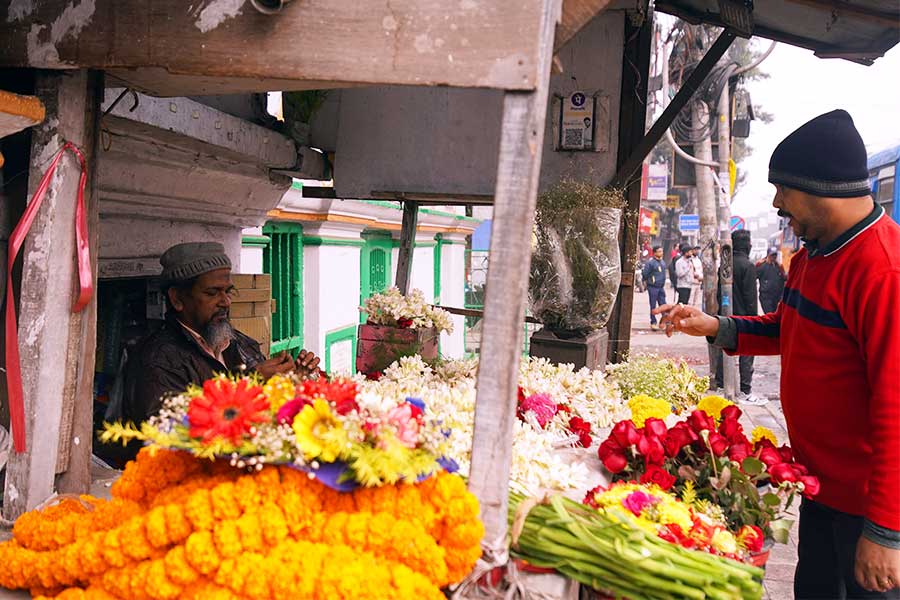
Flower shops run by Muslims sell flowers that are used by Hindus to pray
The flowers used during the prayers in the temple are supplied from the flower shops in front of the mosque, which are mostly owned by the members of the family who run the mosque. “We always invite each other to our festivals. I look at festivals as a matter of celebration. More people can only add more joy to the events regardless of their religion,” believes Ahmed.
Even though it is situated in a Hindu majority neighbourhood, the mosque witnesses a congregation of 150 to 200 people during the Friday namaz. “Anyone from any religion can walk through this place at any time of the day. It’s a safe zone for everyone,” says Sengupta, before adding: “Even during the time of Babri Masjid demolition [in December 1992], when there were riots across India, nothing happened in this area. Relations between our communities have remained intact throughout.” “This area is a holy place. We also keep it apolitical. People can be affiliated to any political party but must keep that part out of the temple before entering,” reminds Ghosh.
Making change together
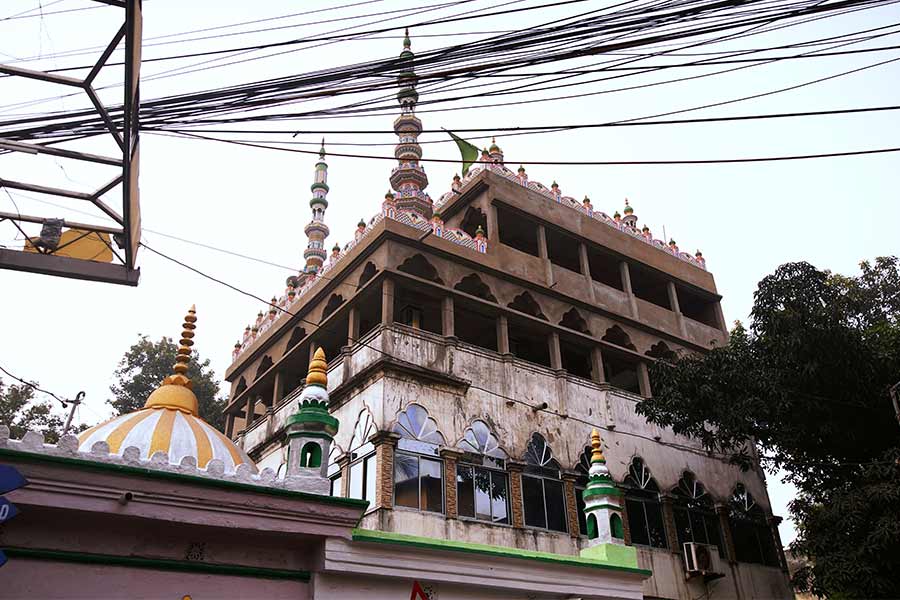
The walls of the mosque were rebuilt in the 1970s to make transportation easier in the area
Today, when those long familiar with the locality are about to enter Tarun Sengupta Sarani, they might notice that the walls of the mosque have been pushed back. During the late ’70s, before the lane was recognised by its current name, it was as narrow as 5 feet in width. Four-wheelers could not pass through the lane. Jiban Krishna Goswami recognised the problem residents of the neighbourhood were facing. His son, Raju Goswami, a councillor at the Dum Dum municipality, recalls: “My father always thought ahead of his time. He knew that if the roads didn’t develop, this area wouldn’t progress.”
Jiban Krishna had organised a meeting along with the fellow members of the club, where he also invited the members of the mosque and requested them to adjust their walls to allow for a wider passage. This was promptly done and the road assumed its present width of 20 feet, capable of supporting the simultaneous movement of multiple four-wheelers.
“When my father told them to rebuild the walls of the mosque in order to leave space for the street, no one from either side objected. It never seemed like an issue. I don’t know if it could’ve been carried out so simply elsewhere,” concludes Goswami.
